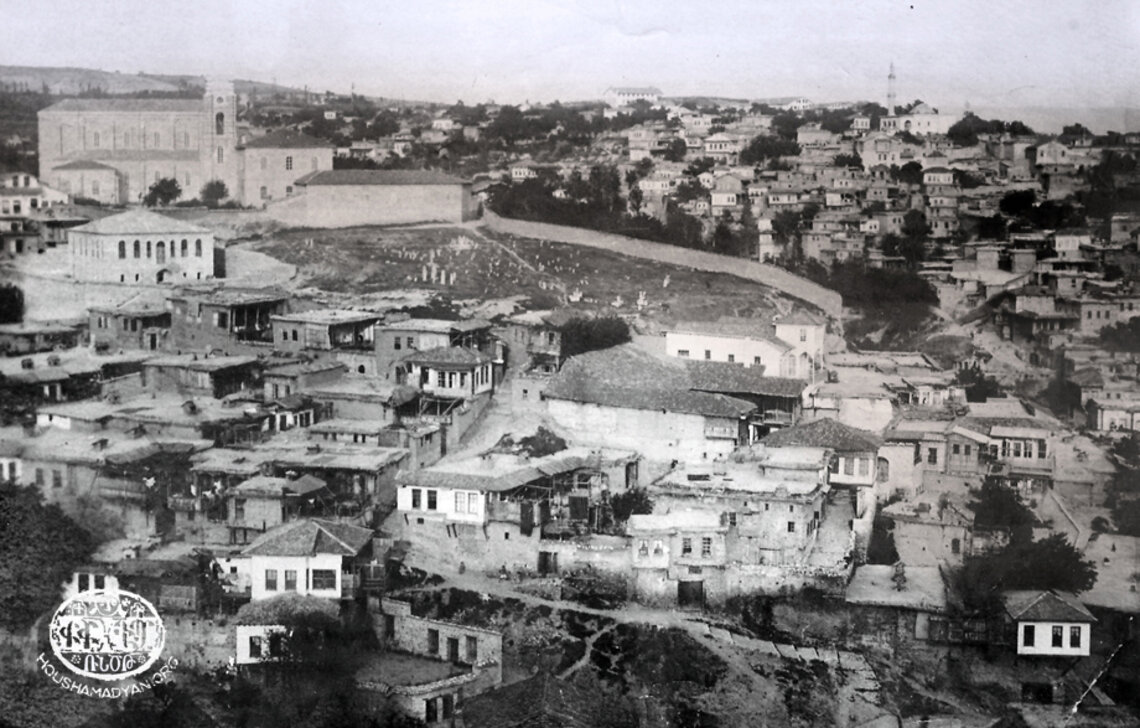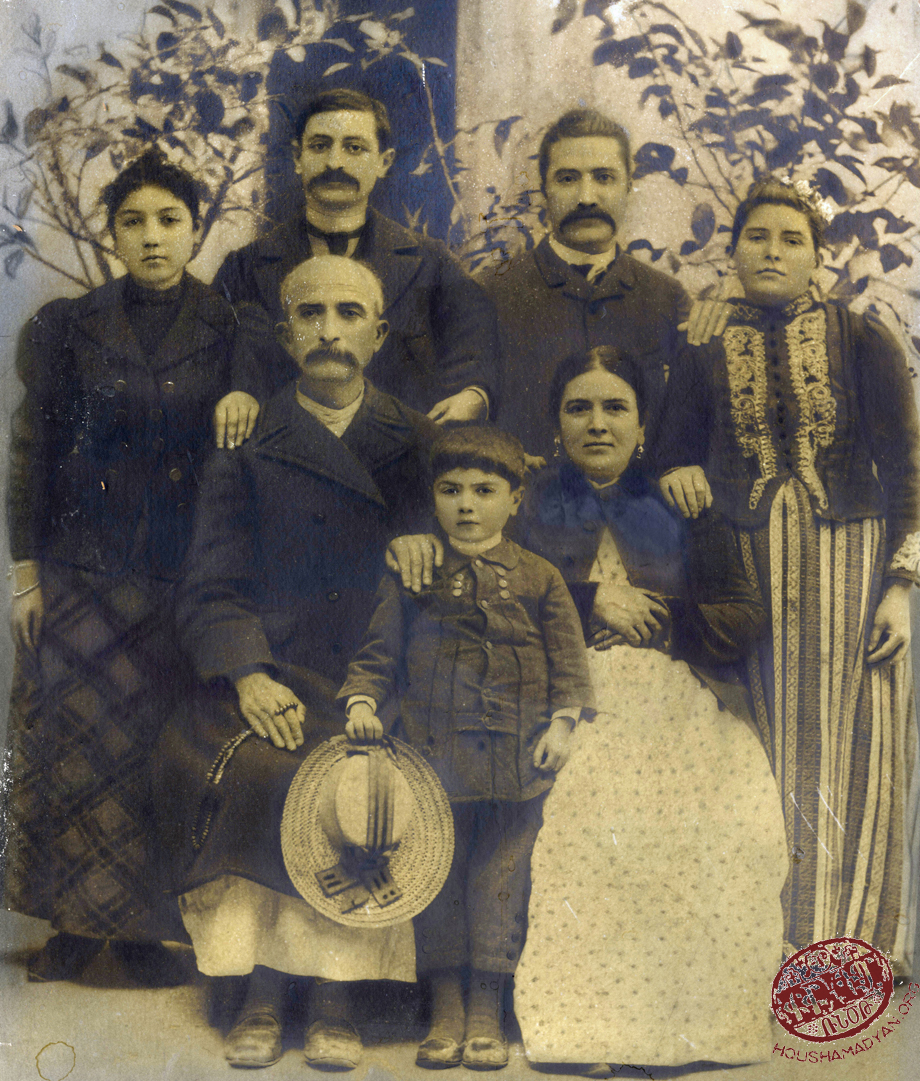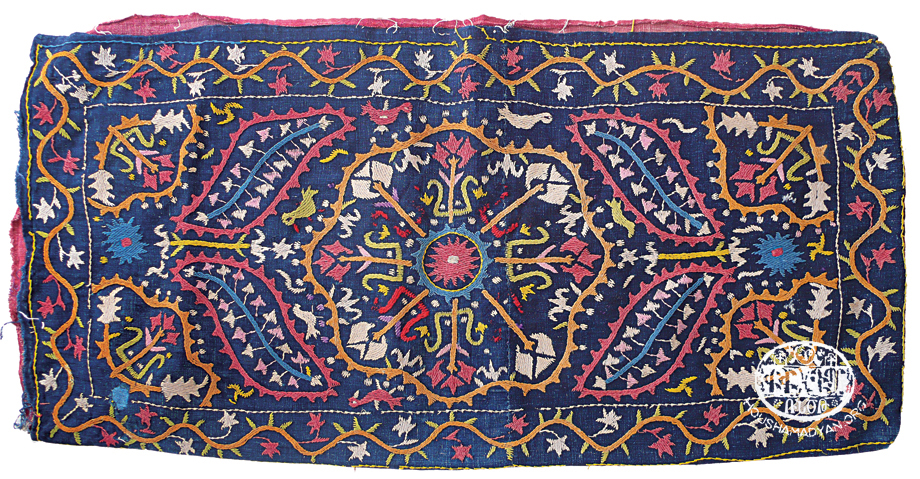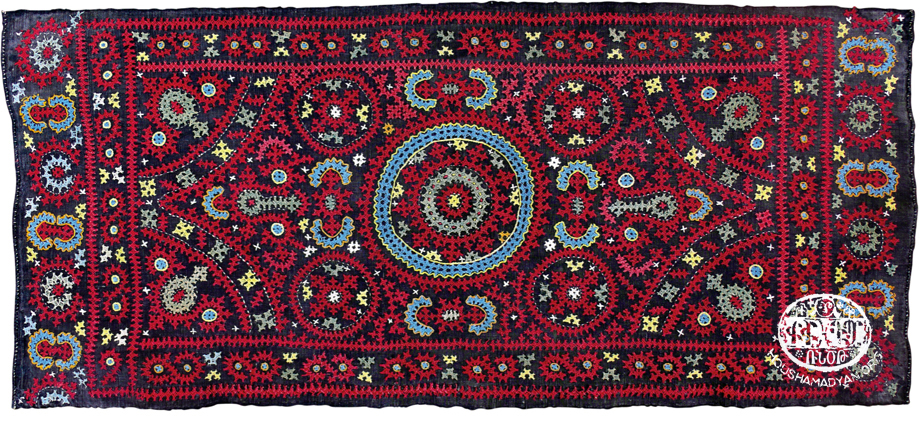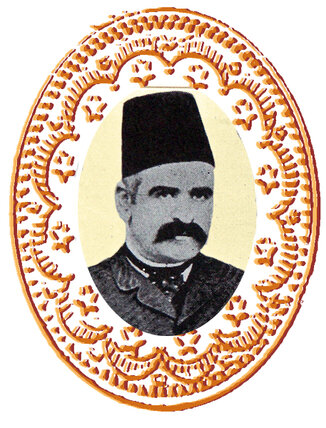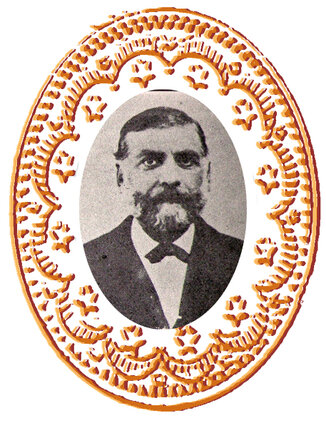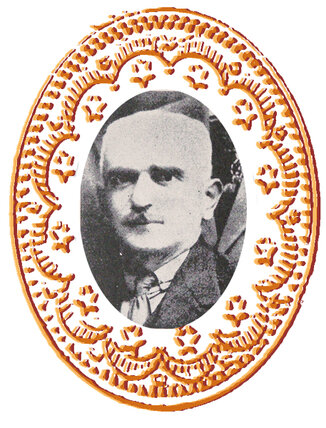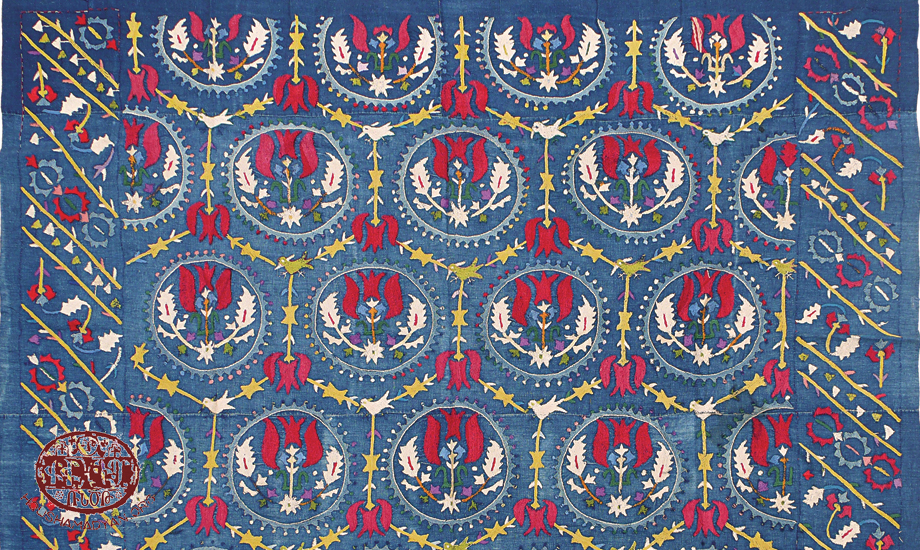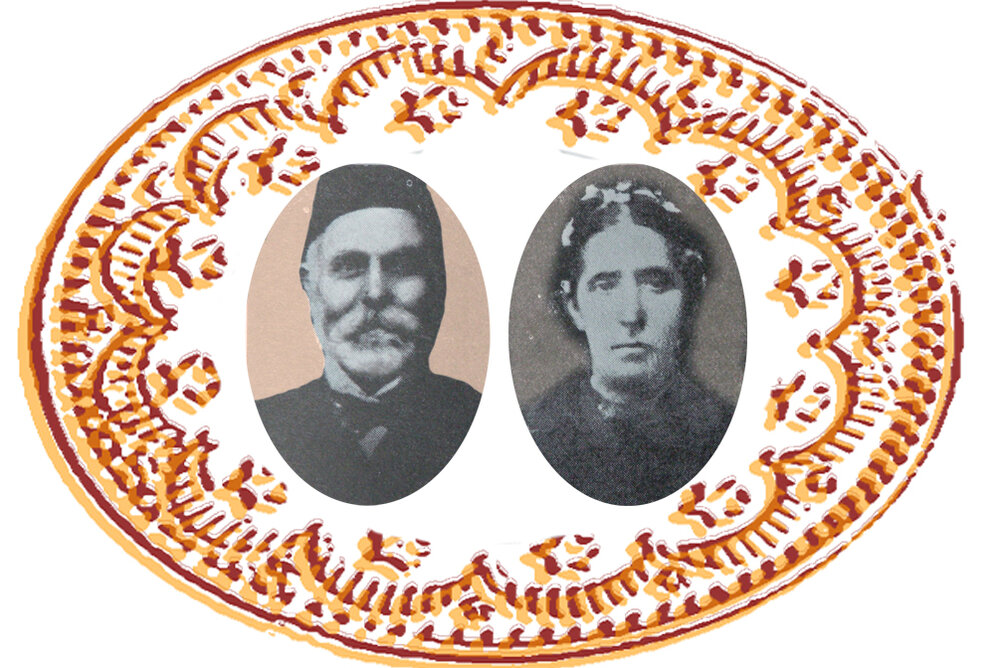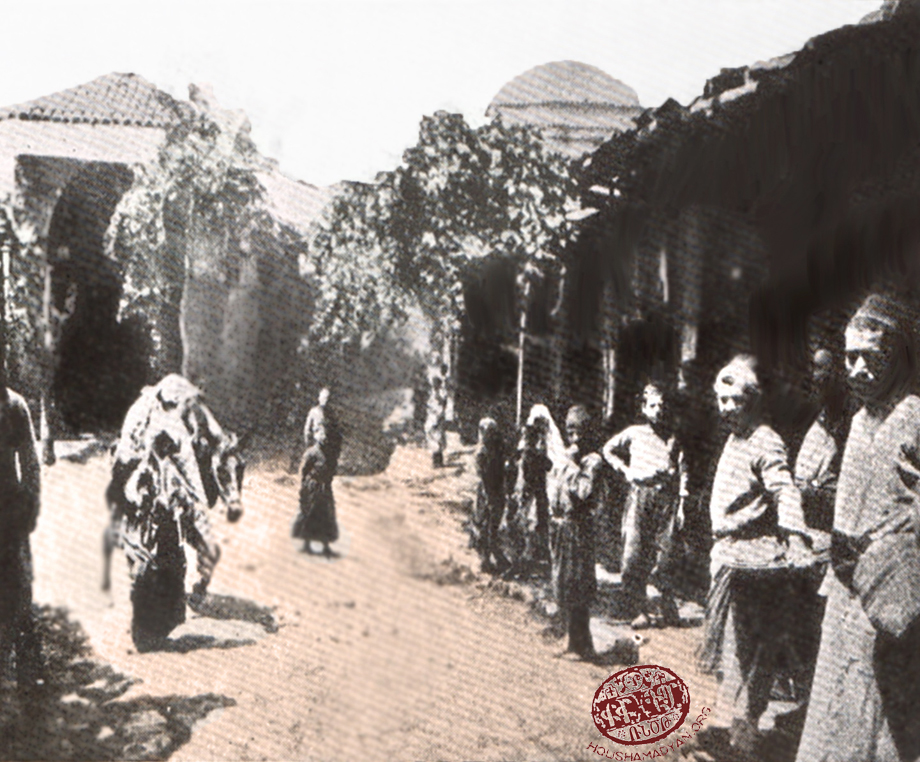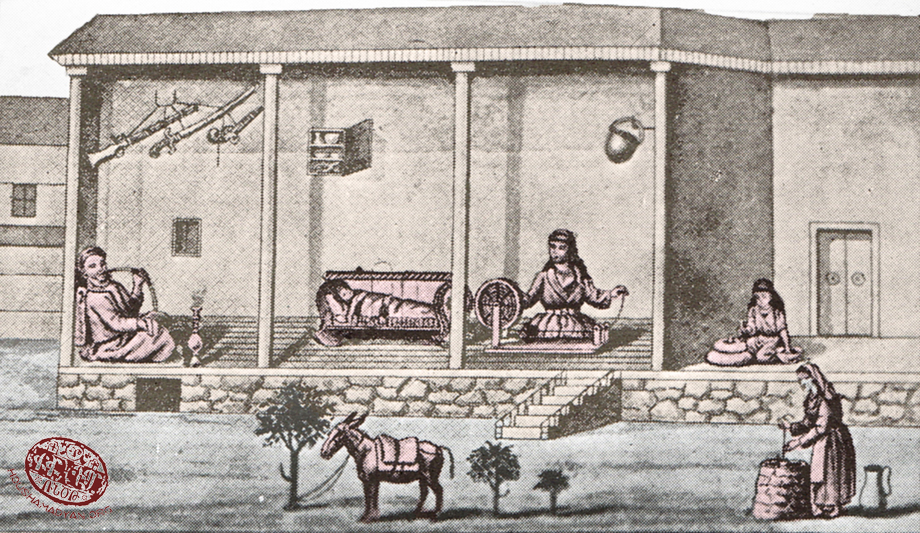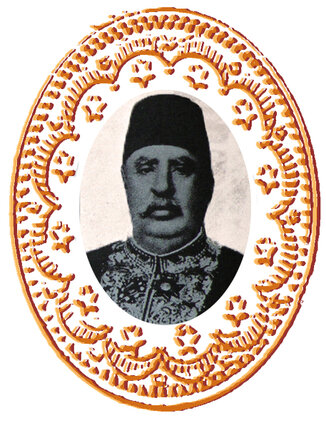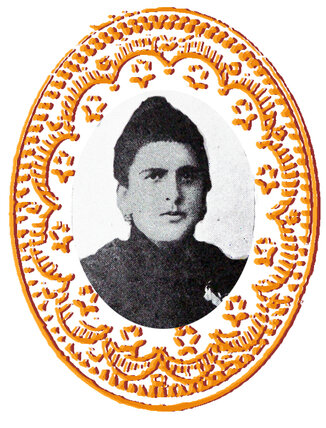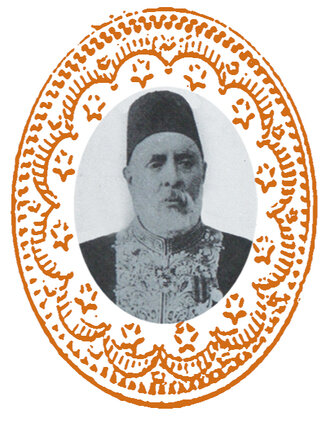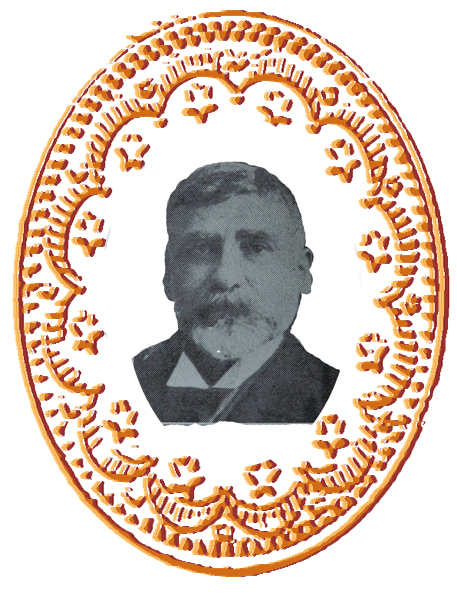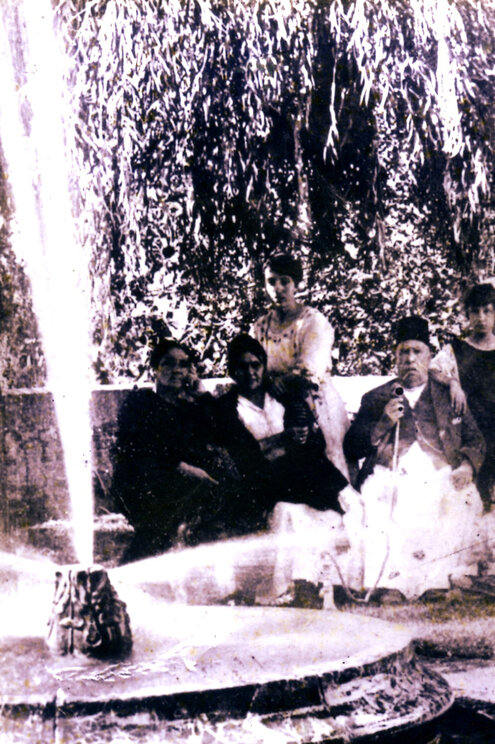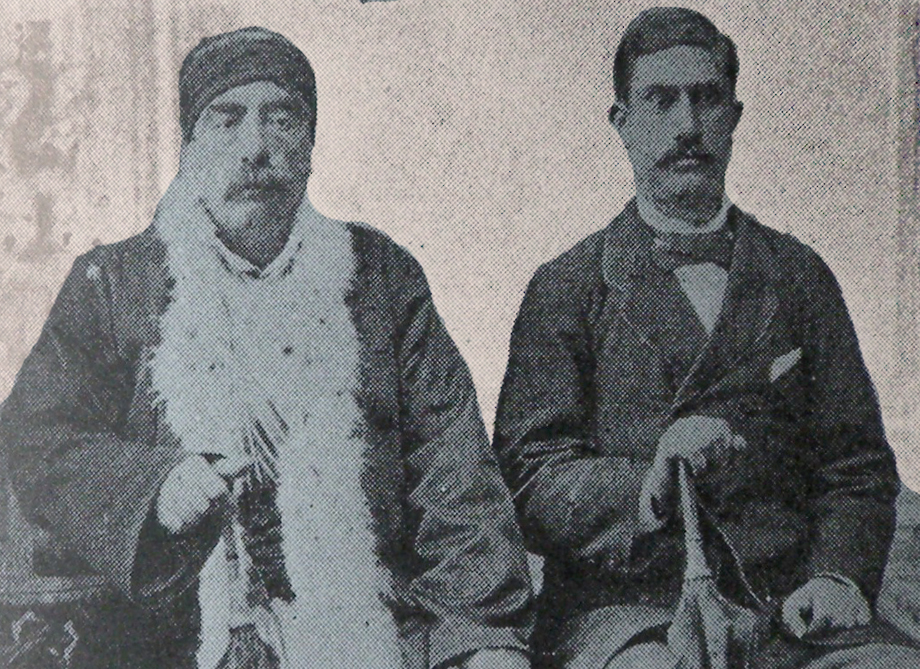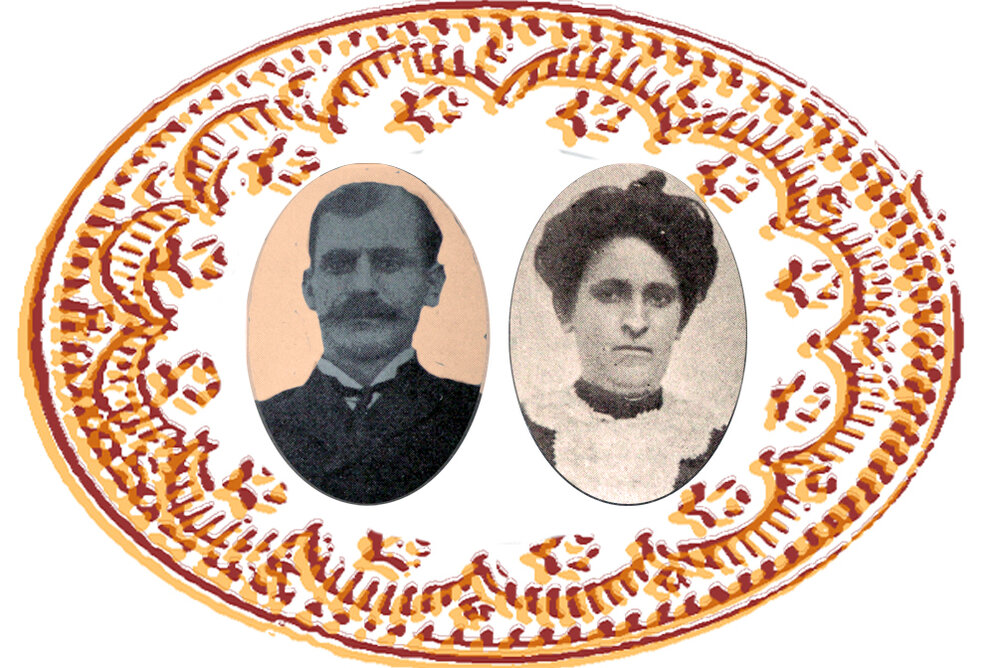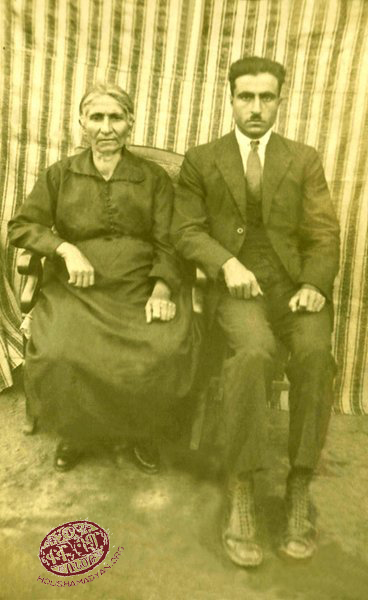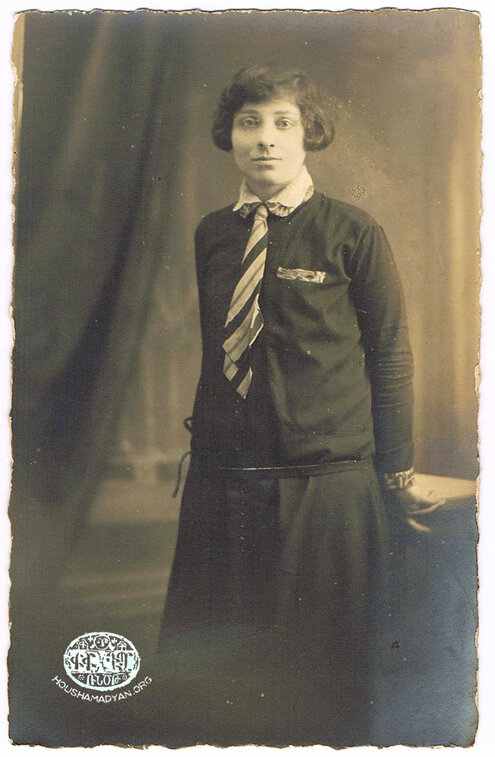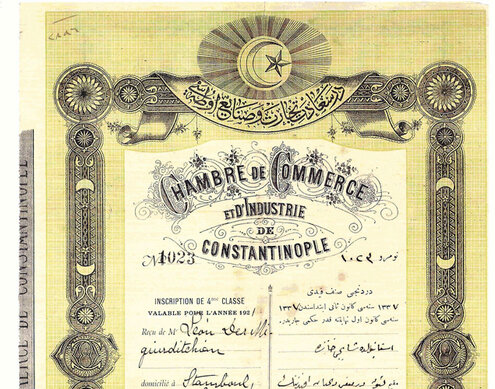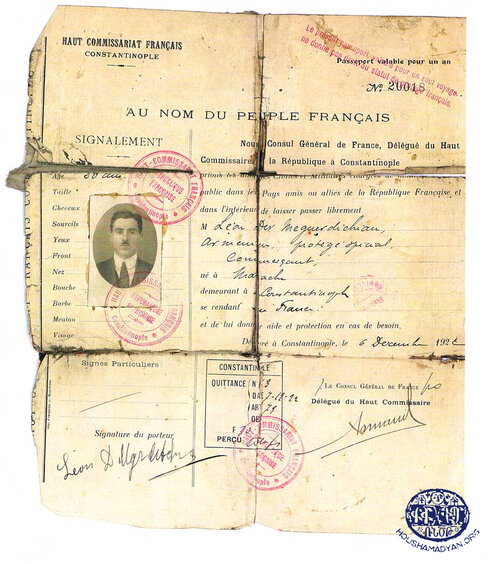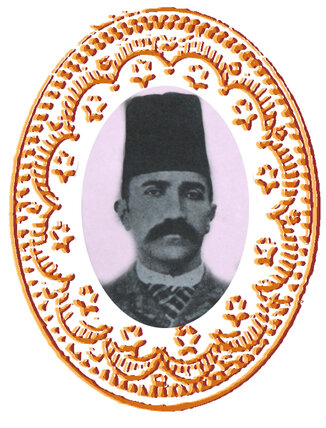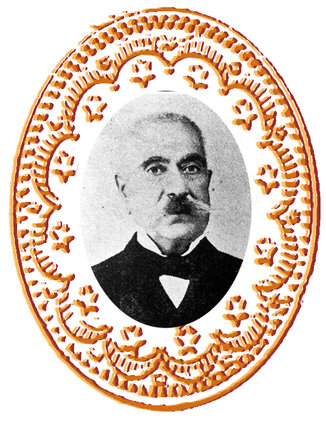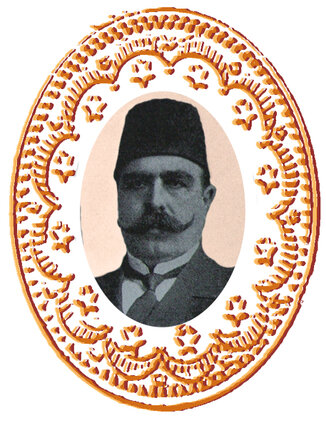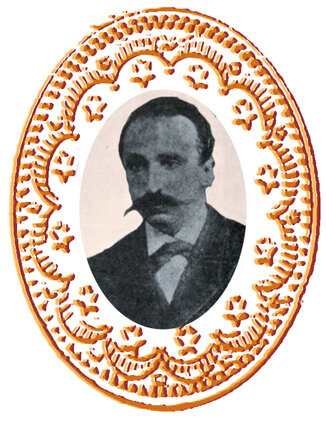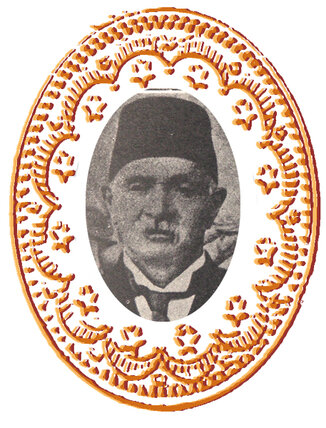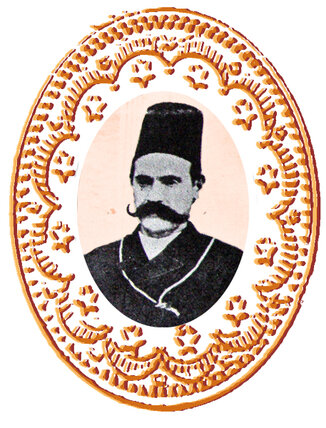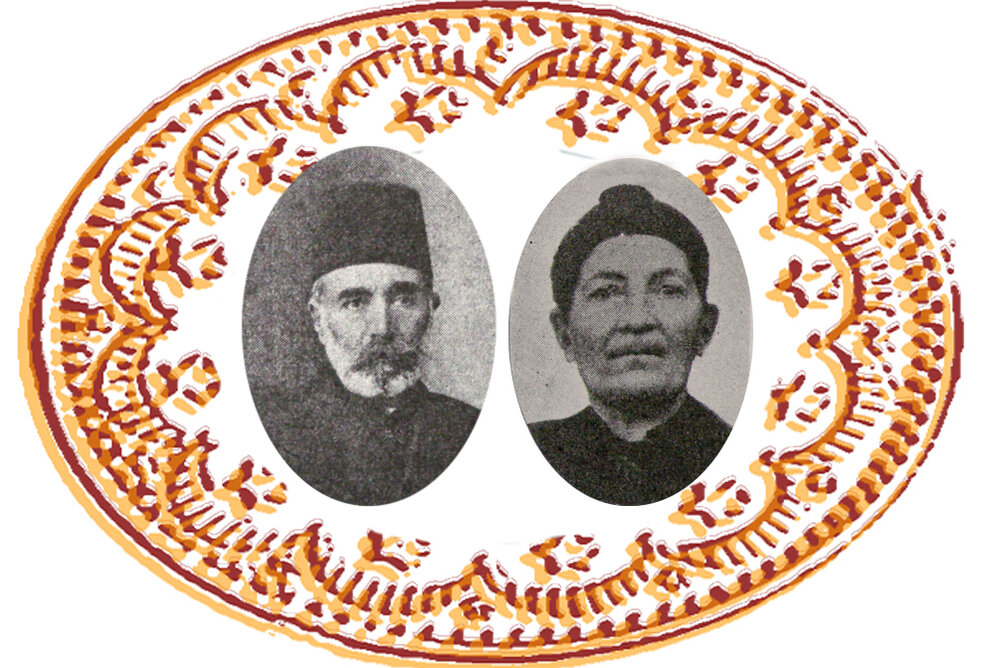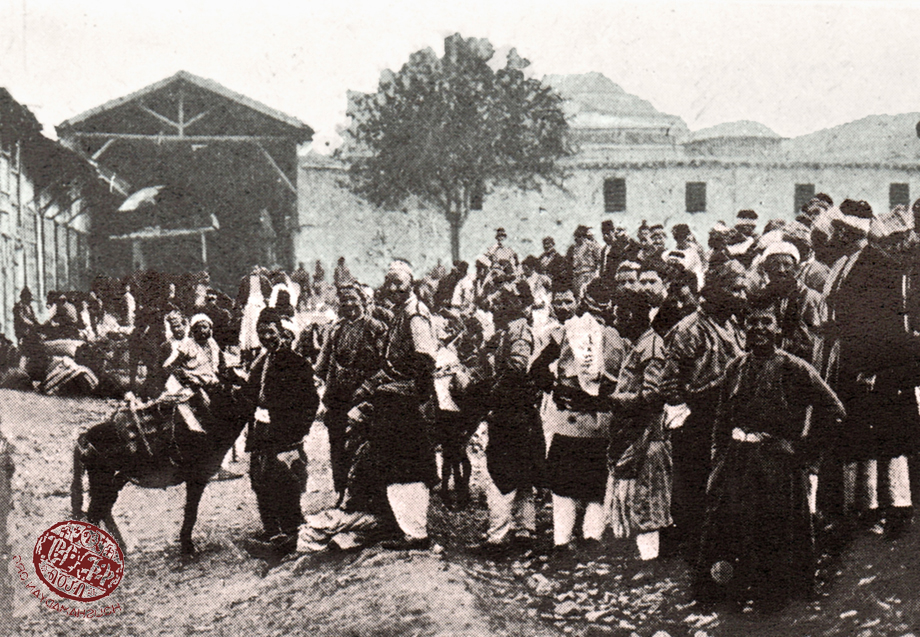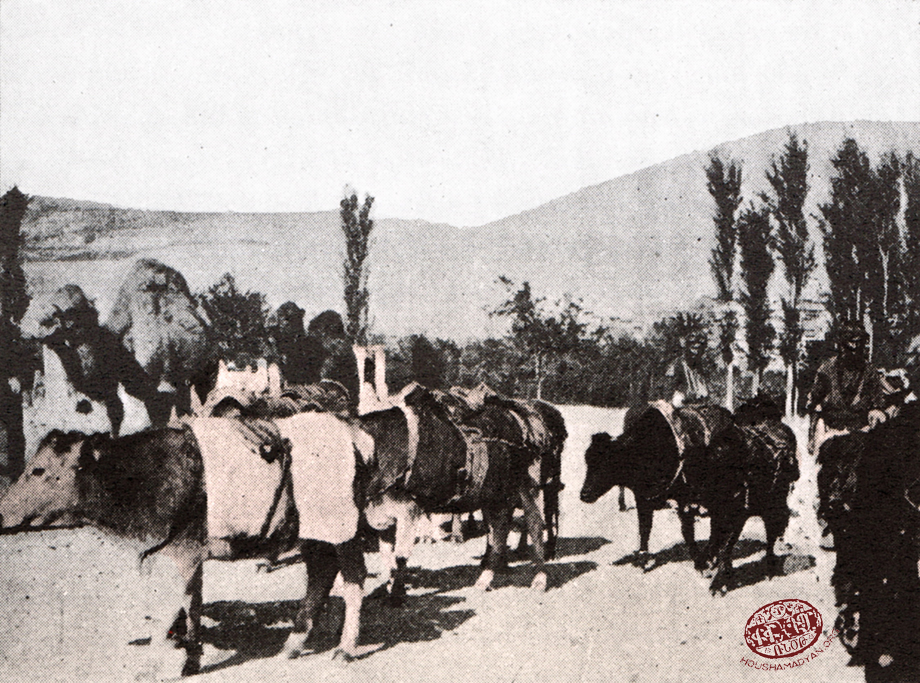Sandjak of Marash - Commerce
Author: Varty Keshishian, 28 Nov. 2011 (Last modified 28 Nov. 2011) - Translator: Ara Melkonian

From early medieval times, Marash/Kermanig, one of the north-eastern gates to Cilicia, has been one of the important centres for trade flowing from the eastern shores of the Mediterranean to Mesopotamia and Persia. There is no doubt that trade and commerce have been in a flourishing state in this town, but very little information has reached us concerning it. On this occasion we only find rare and very valuable references to it in works produced in the Armenian studies field, specifically in written primary sources about Cilicia, that allow us to conclude that Armenians, who formed the basic population of Marash and its surrounding area, not only played a vigorous part in the economic life of the region, but also in the international trade passing through it. It worth noting that the colophons added to manuscripts to be found in the various places of Armenian settlement also provide testimony about the visits of Armenian merchants from Marash for commercial reasons.
After the fall of the Armenian kingdom of Cilicia/Lesser Armenia (1375), on the one hand the lessening of the importance of the overland trade routes, and on the other the difficult political and economic situation created by the region’s conquerors, made Marash lose its one-time importance and significance.
During the era of Ottoman domination, because of the isolation of Marash’s trading environment and markets, trade, turning in on itself, became localised. At the end of the 18th and during the first half of the 19th century however, Marash’s fields of commerce still retained their innate energy. Even master-craftsmen mainly concerned themselves with the retail trade and sold what they produced in local markets or in those of nearby inhabited areas.
The improvements that began in the middle of the 19th century in the Ottoman Empire and the westernisation of trade and economic links provided great impetus for trade and industry, spurring a proportional development of production within the country. Marash, having the necessary pre-requisites for economic development, inexhaustible natural wealth, plentiful raw materials and the involvement of the skilled classes, could not remain outside these increasing movements within the country.
From the second half of the 19th century economic life Marash began to show signs of quickening, with production starting to gain impetus, small factory-like enterprises and workshops being founded and production-trading groups growing.
If, at the beginning, the lack of specific expertise in Marash’s economic environment was special to the town when the master-craftsman was at the same time the producer and seller, then the boom in production that began from the middle of the 19th century was conditioned by the separation of the various trades from merchant activity itself, with the trading and commercial environment becoming a complex of working trading enterprises that took up important roles in the newly formed financial relationships.
The movements in production and trade also created changes in social life and in people’s knowledge, comprehension and customs generally. The representatives of the newly-created financial upper class, having developed contacts with progressive towns, swiftly adopted the latest European customs and manners and introduced them into Marash. They, getting to know the latest trading methods, understanding the imperative need for learning and education, not only directed their own children towards education, but also founded schools and became the organisers of educational work in Marash. It is notable that the majority of the young people belonging to mercantile families joined or assisted the anti-government fighting in Zeytun and the Hnchag (Social Democrat) party’s underground activity.
Thus merchants dealing with locally produced goods, as well as minor and middle-size traders, gradually started to appear in Marash and, step by step, trade began to separate from production, with wholesale commerce growing stronger. The changes pointed out were, of course, relative and progress must be compared in general terms to previous and later times, especially as there were many kinds of restrictive circumstances. Craftsmen and merchants weren’t protected by the government; there was no assurance of life and safety, bandit groups were common on the highways and, if all the various taxes and duties imposed are added, then the picture will appear to be complete. Despite all this, the Armenian merchant-craftsman class, overcoming many difficulties, not only smoothed a path for production and trade development, but also played an important role in the formation of the region’s economic relations.
During the 19th century the Armenians of Marash formed one of the basic elements of the region’s population. The majority were concentrated in the town, while the rest lived in Armenian or mixed-population villages in the area. Just as in the town, production and commerce in the villages was almost all owned by Armenians. [1] Therefore it doesn’t seem incorrect to say that the Armenian element had an important place in the whole population of Marash, not only in terms of numbers, but also because of the number working in the economy. This Armenian monopoly continued until the start of the First World War and the subsequent disappearance of the Armenian element due to deportation and the massacres.
With the object of more or less completing the picture of the activities of the Armenian merchants of Marash, it is necessary to talk about their production and economic activities, bearing in mind the fact that the basis of the mercantile class was the master-craftsmen. More than this: comprehensive analysis of the activities of Marash Armenian merchants shows that until the end of the 19th century the majority of the merchants had still not divorced themselves from their trades. It is possible to say that trades carried on by master craftsmen were the props supporting trade. That is why, until the beginning of the 20th century it was difficult to draw a line between these two groups.
Marash Armenian production sectors demonstrated a very rich diversity. The most important positions were held by weaving, pottery, silk weaving, tailoring, shoemaking, sandal making, dying, gold and jewellery, silverwork, leather work, carpentry, copper work etc. In essence, all the local movement and turnover of goods, from the input of raw materials to the various finished products, was based around this production.
During the last quarter of the 19th century Marash had generally been a centre of retail production and handicrafts. Production mainly satisfied local needs, although there were things made that were sold in other markets, so it is possible to say that the master-craftsmen worked for both internal and external markets. It is noticeable that local trade was of considerable volume, as the majority of the local population took advantage of Marash’s Armenian craftsmen’s work to satisfy its needs. Village areas were virtually bereft of trades, the rural population generally going to the market in Marash for its purchases.
According to data collected in the 1890s, there were 1900 craftsmen’s and grocery shops, 281 workshops, 7 khans, 2 soap factories etc in Marash. [2] The majority of the shops were also workshops that produced and sold their ready products. The shop-workshops were usually handed over with the necessary deeds (gabal); the deed holders (gabalaru) were mostly Armenians. The latter were master-craftsmen or buying merchants, who at the same time also produced and sold their own products. The role of the Armenians in this sphere was really notable and worth dwelling upon.
The trader-craftsmen class, gradually strengthening its position, joining in with the new mercantile-economic relationship movement that was forming, played an important role in the organisation of the region’s industry. Thus, from the middle of the 19th century there was, among the Armenian population of Marash, a so-called upper class of wealthy merchants that had established itself thanks to trade and production, with the basic levers trade and industry in its hands. Master-craftsmen, who succeeded in accumulating capital through their trade, invested it in production, founding handicraft enterprises.
Another group, divorcing itself completely from craft trades, occupied itself solely with mercantile activities. Therefore it was possible to class the Armenian merchants into two separate groups – wholesale merchants that produced, exported and imported goods, and retail merchants. In Marash this latter group had a special classification under the title of attariye or aktariye. This is an Arabic word, whose direct translation is ‘grocer’, but in Turkish also meant ‘retailer’, in other words a seller of many different wares. There is also a third group – merchants that dealt in agricultural goods –wheat, rice and cotton production and the buying and selling of vineyard harvests.
In essence the Armenian merchants in these three sub-groups formed the mercantile-economic entirety of Marash. They supplied all the goods exported from Europe and imported into Marash and the surrounding areas of settlement, and established trading links with commercial towns and trading markets in the Ottoman Empire, sending their representatives to them, thus having the means, through them, of importing every kind of item produced in Europe.
The Armenian merchants of Marash also cultivated links with the Armenian-populated towns in Cilicia and Asia Minor, as well as markets in Syria – those of Aleppo and Damascus and agents in those places - and succeeded in realising trade with the mercantile houses there. These merchants went, several times a year, to Istanbul, Aleppo, Gesaria/Kayseri, Adana and other places and brought many kinds of goods back to Marash. They exported local natural and hand-made products to distant and nearby places in the Ottoman Empire – Sis/Kozan, Adana, Gesaria/Kayseri, Malatya, Diyarbekir, as well as Damascus and Aleppo and, buying goods from those places, brought them to Marash. [3] Through agents in Aleppo, goods from Marash appeared in European markets.
Imports into Marash included every kind of metal goods, glass, ceramics, textiles, woollens, dyed yarn and cloth, red yarn, coloured leather goods, sugar, coffee, oil, paper etc. [4] The majority of these imports arrived along routes through Mersin, Beirut and mostly via Alexandretta/Iskenderun.
A basic place among the exports from Marash were natural products – rice, raisins, dye-weed, pistachios, gall nuts, madder, walnuts, orchis root, as well as simple but decorated horse saddles called sarradjiye (saraciye), copper ware, carpets, lumber, walnut timber, clothing, leather goods, cordovan or morocco, gold and silver items produced by craftsmen in the town, as well as animals, high quality sheep wool and, for the interior provinces, aladja/alaca (coarse cloth), cloth, local sandals, clothing – shalvars (loose trousers) made from black wool or goat hair, fermanes, abas (coats) etc [5]
Large-scale production merchant
From the middle of the 19th century comparatively large handicraft workshops and production enterprises were founded in Marash. Naturally the master-craftsmen who had founded them to make profits put the trades that they knew and were in great demand on the market first, such as weaving, spinning, cloth making and trades that were connected with them.
All the necessary preconditions or, more correctly, favourable conditions for production of textiles existed in Marash. First, the area was agricultural, with virtually no production and was a weak area for the distribution of European production. Other favourable conditions were the plentiful supplies of raw materials, a market demanding goods and the availability of the great skills of the master-craftsmen. All this was conditioned by the organisation of the weaving and associated trades’ production in Marash. It is possible to say that production was localised.
The merchant-craftsmen class had entered a new field with the traditional crafts that belonged to the Armenians of Marash, enlarging and transferring small, home-based production to factory enterprises. Weaving and cloth-making production traditions had been accepted by the Marash Armenian merchants who, taking advantage of people working for hire, founded workshops. These were small manufacturing types of factory, where small – and sometimes large - groups worked. At the end of the 19th century the volume of weaving and cloth making production was such that it had captured first place in Marash’s handicrafts and production. The merchants were themselves master-craftsmen who placed orders and under whom tens, sometimes hundreds of weavers worked. The master-craftsmen who ran the trade were also the merchants who imported yarn and exported finished goods.
Marash had, for many years, been famous for its production of textiles which were worked with eastern-style cotton, wool or mixed embroidery – cloth like alaca, garments like manisa, abai and maşlah, as well as those worked with gold and silver threads, belts, headscarves, printed cloth coverlets and curtains. They also produced other textiles made of wool or silk, which were exported to the interior provinces of the Ottoman Empire and even to Damascus and Aleppo.
Unfortunately we lack details concerning the volume of textiles produced, just as we have none about the amount exported and their selling prices. But judging by the number of merchants and craftsmen working in this field, it must be supposed that this trade must have been very profitable; it is clear that the initiating merchant-trader class had quickly prospered, and had expanded its field of trade.
An important place was held in both the internal and external trade in Marash by the alaca (a comparatively thick woollen woven cloth) trade. Apart from satisfying local consumption, great quantities were exported to the Armenian-populated towns and villages of Cilicia and Asia Minor, as well as Syria. [6]
From the middle of the 1800s there were many alaca workshops and manufacturing enterprises in Marash.
Stepan Isgian must be considered to be one of the pioneers of this work. Born in Marash in 1791 this Armenian, after the death of his father Melkon, was sent to Jerusalem as a student in the Seminary under the tutelage of his uncle who was the bishop in charge of one section of it (called jarankavorats) and who also taught there. After studying for a few years, he wanted to become a celibate monk, but upon his uncle’s advice, returned to Marash and founded his alaca workshop. The enterprise quickly prospered. As an able and clever merchant he enjoyed great esteem among the Turkish and Armenian communities that, as an expression of respect called him Hadji Baba. Isgian was linked through trade with a number of towns close to Marash. He died in 1875. His sons were also involved in trade and were early settlers in the United States. [7]
One of the earliest traders in alaca work was Hadji Bedros Giligian (Yirikian) who was born in Marash in the 1830s. He was the forefather of the prosperous Yirikian family, and is remembered as an education-loving person who also helped the poor. He established quite a substantial alaca business. All the members of the numerous Yirikian family were killed in the 1895 massacres. [8]
Another well-known merchant involved in the alaca trade was Vartivar Shahzadehian (born in Marash in 1845), who with his brothers Baghdasar and Boghos, established a large workshop and occupied himself with trading. He too was a victim of the anti-Armenian massacres of 1895. [9]
A notable merchant in Marash was Hovhannes Der-Mesrobian (born in Marash in the 1850s), who occupied an important position in the trading market, and established a large alaca business in which his brothers took part. Alongside his mercantile activities he actively participated in Marash’s community and church life, and was a member of Forty Holy Innocents church parish council and gave many generous gifts to the church. He died in 1907 in Marash. [10]
Another famous alaca producer was the merchant Apraham Chorbadjian (born in Marash in 1879), the son of the notable Marash merchant Garabed Chorbadjian. He received his education in the St Stepannos and Central schools. He entered trade while still a young man, opened workshop-shops and began to have alaca made. At the end of the 1890s he was linked through trade to many commercial towns and centres. He visited Aleppo, Beirut, Istanbul, Greece, Izmir, Egypt and considerably enlarged his trade. After the Cilician disaster of 1909 he moved to Aleppo, then took the trade in South America in hand. [11]
Many families were involved with alaca work, such as Boghos Saatdjian, the Bulghurdjians, Kovouklians, Der-Hovhannesians, Seferians, Medzabadivians, Hadji Partam, Garabed Husukutian and others. [12]
Clearly these were merchants who placed orders and, securing the necessary raw materials, supplied it to the workshops and to the hands that worked in houses, and who sold the material made by their workers in Marash’s famous closed market called alacacı bedesten, [13] in the surrounding villages and towns, in Gesaria/Kayseri or as far as Syria.
Other cotton and woollen fabrics were produced in Marash’s workshops. Fabrics made from goat hair and sheep wool were in great demand in both the local and surrounding town markets – abai, kumash/kumaş and so on. There were master-craftsmen that bought wool in great quantities from the pastoral Turks and Kurds, using it to have woollen goods made. The belts made from cotton and wool in Marash and sold in the local market as well in surrounding areas were also famous. It is important to note here that the basic work carried out in Marash and especially the surrounding villages was animal husbandry; the animals provided so much wool and hair that the amount was enough for not only local needs, but also for export.
The blue-dyed cotton cloth produced in Marash called khasa (hasa) had a large market in the town and the surrounding villages, as did the coarse material called bez or mağrum. Silk goods worked with gold and silver thread as well as embroidered cloth were all famous and were exported to both nearby and distant towns.
Apart from fabrics, there was great demand for ready-made clothing and accessories made in Marash. Men’s outer coats called abais, and silk versions of them called beden abai, sırma decorated with with gold thread embroidery were much sought after and were quite expensive, costing between 15-20 gold liras, as were baggy trousers made of wool called shalvars that were sold in towns and villages around Marash. [14]
At the beginning of the 20th century, when the wearing of European fabrics and clothing became general in the town, local production was mainly sold in the villages.
Among the main exports from Marash were silk items – tassels of various kinds and fancy edging that, rather than selling out in the town, went to even the most distant places, where they were very famous. The town’s master-craftsmen – the kazaz (silk thread makers) – were those mostly involved with their sale and export, rather than just selling them locally. [15]
It is a notable fact that until the beginning of the 20th century, people in Marash weren’t involved in sericulture therefore all the silk thread was imported from outside, mainly from the Aleppo and Damascus trading markets. Thus silk thread imported into Marash by Armenian merchants were turned into silk articles and then exported to other markets as finished goods.
In the middle 1800s the greatest silk goods merchants were the members of the Chorbadjian clan. The business was founded by the clan’s forefather Chorbadji oghlu Hagop Agha. His sons – Deovlet Chorbadjian and Tavit Chorbadjian – carried on his work. Deovlet was born in Marash in 1815. He received his primary education from Harutiun Kalfa Yumshadjekian Yarpuzlu. After spending some time at his father’s trade – being a kazaz (silk thread maker) – he became a merchant, in which he achieved great success. He rebuilt his ancestral home and built a separate three-storey 30 room house as well.
Deovlet Effendi Chorbadjian’s sons were Harutiun, Mardiros, Hagop and Garabed, who likewise gained important positions in Marash’s community, public and mercantile circles. When his sons achieved success in business, Deovlet Effendi dedicated himself to community and public works. From 1850 until his death in 1890, he was a member of high government assemblies - as the Armenian representative to the Medjlisi Idare (meclis-i idare, board of managers), as well as being the chairman of the community’s political and provincial assemblies. He had the opportunity to meet Sultan Abdülaziz who, impressed by him, invested him with the rank of rütbe-i salise. Yesayi, the Armenian Patriarch of Jerusalem, appointed him Marash’s vicar (this must be understood to mean representative), a position that he held until his death.
It is recalled that Deovlet Effendi also visited Odessa, the maritime gateway to Russian trade, and on that occasion was given the title of Shahbender, but had the shrewdness not to use it in his home town. After the proclamation of the Constitution, he became Marash’s representative to the Aleppo vilayet’s council (meclis). He reconciled the mutassarıf Hadji Nazir Pasha with his opponent the military commander Ismayil Pasha and, through Nazir Pasha, was able to have the land trade tax – badj/bac – that was taken on all Marash’s exported goods and acted to restrict the development of trade in the city, cancelled. In 1882 he had an important role in holding back a Turkish army force of 1000 armed with cannon that had been sent to defeat and arrest the Zeytun rebels and settling the matter peacefully.
He was a great benefactor of St Stepannos church with his generous gifts. He participated in the foundation and building of the Marash Central School. With the object of putting the school on a secure footing, he presented it with three shops as profit-making property. He was zealous in spreading education and opened a school next to St Stepannos church and then, at his own expense, invited teachers to teach there. He was loved and respected by the Armenians and Turks of Marash. Deovlet Effendi died in 1890 and was buried in the courtyard of St Stepannos church. [16]
Deovlet’s son Tavit continued his father’s work – silk thread manufacture - for many years. His sons, Giragos and Nshan Chorbadjian likewise continued their father’s trade. [17]
All the Chorbadjians were notable representatives of the Marash merchant class, achieving influential positions not only in trade, but also in the Armenian and Turkish communities. They were important participants in Marash’s community, church and social life and assisted it with important donations and also held responsible government positions.
Deovlet’s son Hadji Giragos Chorbadjian was a kazaz, who for many years dominated the market as a merchant, enjoying the esteem of both Armenian and Turkish circles. His integrity gained him the confidence of the Turkish workers, who preferred to sell their production to him. He actively participated in community life and held the position, for many years, of treasurer of the church of the Forty Innocents. He died before the First World War. Of his sons, Dikran, continued his father’s work, and was also a noted merchant. [18]
Nshan (born in Marash in 1857), youngest son of Tavit Chorbadjian was also a kazaz by trade. He received his education in the town’s Central School. He actively participated in community and social life. It was due to his initiative that the first theatre group was formed in Marash that produced plays for the Armenian and Turkish public. He was one of the first Hnchags (Social Democrats) and was persecuted by the government. He was a victim of the 1895 massacres. [19]
Mardiros Chorbadjian (born in Marash in 1849), Deovlet Effendi’s son, was also a merchant. He received his primary education in St Stepannos School and St Sarkis Gymnasium (school). He had an important role in the foundation and construction of the Marash Central School. As the chairman of the Subscription Committee he, with a few like-minded people, brought about a great educational movement in Marash. He died in 1889, at a young age. [20]
Hagop Chorbadjian, Deovlet Effendi’s third son, also a merchant, obtained his education in Marash’s primary schools. Following his father’s example, he led a life that was beneficial to the community. In 1890 he was appointed a member of the local management council (meclis-i idare). He was imprisoned in 1896 as a result of a political accusation, but later freed. During the deportations of 1915 he remained in Aleppo, but was then deported to Bab, then to Der Zor, where his entire family were victims of the massacres. [21]
One of the notable representatives of the Chorbadjian family was Garabed Chorbadjian, Deovlet Effendi’s youngest son. He received his education in Marash’s community schools. It was he who founded the St Stepannos church’s Rupenian Union, with philanthropic objectives. He attempted to secure a financial income for this union by founding profitable works. He was taken to Aleppo charged with a political offence, then freed. After the 1896 massacres he founded, with Protestant pastor Rev. H. S. Djenanian, the Marash Orphanage-School, for the orphans that had collected in the town. He was one of the first Hnchag (Social Democrat) party members there. He was involved in community work for over 40 years. During the deportations of 1915 he was exiled to Aleppo, then to Bab. After the Armistice in 1918 he returned to Marash where he survived the disaster of 1920, but was killed by Turks in mysterious circumstances in September 1921. [22]
1. Hagop Kherlakian (?-1920)
2. Marie Kherlakian (Hagop’s wife)
3. Kevork Kherlakian (1838-1903)
Another master-craftsmen occupied with this trade may be recalled - Hadji Kasbar Geoniubeyazian, who was also a kazaz. [23]
The Kherlakian clan headed the Marash merchants’ group. The clan originated from the Kasbar Kalpakian-Kherlakian family that immigrated to Marash from Karabagh. It belonged to the group of the greatest merchant houses of Marash. Thanks to their boldness and mercantile shrewdness the Kherlakians, while enjoying an honourable position and influence in Marash, at the same time gained the respect of Armenian and Turkish circles. The grandfather of the clan, Kasbar’s son Toros Dede Kherlakian’s family formed the continuation of the line; his sons were Kevork, Apraham, Avedis, Hagop and Harutiun. The family were very active in wide areas of trade, engaging in manufacture, agriculture, import and export. They established branches in Manchester (England), Aleppo and Beirut, the latter being places where they had houses where they often stayed when they dealt with their business. Belonging to the Catholic community, the clan greatly assisted the town’s Catholic church and school.
The oldest representative of the clan, Kevork Kherlakian (1838-1903), who enjoyed great respect in Marash’s Turkish and Armenian circles, held an honorary government position and was decorated. [24]
One of the notables of the family was Hagop Kherlakian, who had a very high position. Alongside his mercantile business he was occupied with supplying articles for the Ottoman army under government contract. He received medals for his services to the government. For his important services to the Catholic community he was awarded a medal by Pope Leo XIII.
He was elected as Marash’s representative (mebus) to the Ottoman parliament in 1914. In 1919, after the Armistice, returning to Marash, he gave great assistance to the officers of the French army of occupation, securing their living. In 1920, however, when the French force suddenly retreated, he didn’t even have an inkling that it would happen. He tried to follow the retreat, but was captured by the Turkish mob near the town and killed. [25]
One of the well-known names on the mercantile market was Krikor Medzadurian [26] who was a carpet merchant. Other people, also remembered in the same trade, were Hovsep Dishchekenian, Sarkis Chorbadjian etc. [27]
Important steps were taken in the production and trading of carpets in Marash at the beginning of the 20th century. In 1909-1910 carpet workshops under the name of the British-Eastern Carpet Company (Sharz khali kumpaniasi) were opened in Marash, giving impetus to the production of carpets. This enterprise, with all the harbingers of success, was, however stopped in its tracks by the massacres and deportations. [28]
1. Haroutiun Muradian (1854-1926)
2. Hagop Kherlakian and family in the garden of their house in Marash (Source: Kherlakian family collection)
The demand both in the local markets and in those of the surrounding villages and towns for soap were completely satisfied by the two soap factories – the masbanas - set up by Armenian merchants. The first one was set up by a member of the Chorbadjian merchant clan – Garabed Chorbadjian – in partnership with Garabed Mahseredjian, who was also a well-known merchant in the town. [29] Mahseredjian also founded a workshop called şirlahan yağı mahsere, to produce sesame oil (tahin), which was mostly sold in local markets and was greatly in demand.
Identical mahsere production enterprises were owned by other Mahseredjian brothers, who operated in the Seray altı quarter. [30]
The second soap factory was owned by the well-known merchant Boghos Muradian (born in Marash in 1828). Apart from the soap factory he owned a factory that cleaned and prepared cotton as well as a mill. It was said that because of his position and wealth his house was one of the primary targets during the anti-Armenian massacres in Sultan Abdülhamid’s time. Boghos Muradian and his two brave sons defended themselves for hours, but when they ran out of cartridges, they were all shot dead and the house looted.
Copper working was a relatively well developed trade in Marash; master-craftsmen prepared large and small cauldrons, trays, tubs, cups and various items for the kitchen, all of which satisfied not only the needs of Marash itself but also those of all the surrounding villages and towns as well as a number of towns in the plains of Cilicia. [31]
A well-known person in this market was Avedis Senenkdjian (born in Marash in 1853), a member of the first Armenian Protestant church, who was very active in charitable and social affairs within the Protestant community. He was a member of the town hall committee. He was deported to Damascus, but moved to Aleppo, where he remained until 1930, when he moved with his family to the United States. [32] Famous names in the copper work trade were Hagop Garabedian and his brothers, Avedis Kumruyian, the Haytayian family, Avedis Sandjian and his sons and others. [33]
Apart from copper work, ironwork was also quite a busy trade, and was a Turkish speciality, whose production – items used in ordinary living and agricultural tools - were much sought after in the surrounding villages and towns. [34]
Just as in various other Armenian places of settlement, the working of gold and jewellery remained the monopoly of Armenian craftsmen in Marash. The choice and delicate gold items they made – bracelets, necklaces, earrings, circlets, belts etc – were famous even in places where gold and jewellery work had reached a very high standard. According to Krikor Kalusdian’s testimony, it was impossible to believe that the various ornaments produced by the goldsmiths of Marash were made by hand. [35] Black-patterned silver (savat) jewellery and boxes were much appreciated. Gold and silver items produced in Marash were exported all over the Ottoman Empire, even to Istanbul and other places. [36]
Master-craftsmen who owned workshops would often import the raw materials, dye and other things necessary through intermediary merchants or procurement agencies in various towns and cities. In this case we are dealing with the kind of production trade that not only is not divorced from the workshop, but in actual fact is nourished by it. In fact this kind of trade is of a familial nature, with different activities being carried out by different members of the family. They were, at the same time, both importers and exporters.
A notable example of this kind of establishment was the printing (basma) works founded by the Saghbazarian family, whose production was even known locally as saghbazar/saǧbazar basmasi. Passed down from one generation to the next, this trade became a serious production business. The basic materials, dyes and printing blocks were all entirely made by members of the family. Apart from satisfying local demand, their printed goods were much sought after in the surrounding towns and villages. [37]
This kind of printing was a branch of the kind called yağlıkcı that had reached an advanced stage of development thanks to the efforts of one of the production merchants, Hovhannes Chorbadjian. Multi-coloured prints of flowers and other patterns were printed on crepe or gauze by using a printing block for each colour. He also personally produced all the necessary materials and assemblies for this work. [38]
Wooden products and furniture had a special place among the exports from Marash. Thick forests growing on the slopes of the surrounding mountains greatly assisted in the development and increasing production of the trades dealing in wood – carpentry and lumber. Here too there were two separate branches of the trade – that of trading in timber and lumber and of trading in furniture constructed by master-craftsmen.
The first group concerned itself with the provision of building materials – beams and joists, as well as the obtaining of firewood and its sale. Apart from satisfying local needs, all these were exported to nearby towns, as well as Syria. [39] The second group was concerned with furniture production. It is well known that the quality furniture produced in Marash was mainly for export. According to Giligetsi, in Marash: ‘carpentry has developed greatly, compared to other trades. Choice chairs, armchairs, bedsteads, sofas and so forth are made, but very few of them are to be found in houses in the town; they are considered to be for the wealthy. The craftsmen construct them and send them to Aleppo, where they are sold.’ [40] It is of course interesting to know how large pieces of furniture were taken on such a long journey to reach Aleppo when there was no means of transport or traffic. The shrewd merchants found the means to transport them without damage: they put them into large wooden cases and, using muleteers, exported them to the provinces of Adana and northern Syria, mostly to Aleppo. [41]
Towards the end of the 19th century trade relations between Europe and the Ottoman Empire became even closer, the markets were flooded with cheap European goods, and workshop production methods began to decline. Some forms of production, not being able to compete with that of Europe, were gradually driven out of the market and the market itself became dominated by import merchants.
Attariye (aktariye) merchants
This group of merchants were notable for their lack of specialist divisions. They were mainly importers and exporters, in other words they operated in accordance with the market’s needs, buying many different kinds of stock from different places and selling them in their shops and stalls in Marash’s various markets. This group also included the merchants linked to Istanbul, Aleppo, Mersin and Gesaria/Kayseri who were generally concerned with the import trade. They sent locally produced handicrafts, soap etc to the provinces, receiving mainly gall nuts, glue, walnuts, rice, skins, wooden products and various kinds of raw materials from them, which they sold in or around Marash.
Mgrdich Amiralian and his son Yezras had notable positions as attariye merchants. The Amiralian clan was originally from Zeytun and it is recalled that Mgrdich’s grandfather served as a doctor in the Ottoman army and received the honorary title of amira, hence the family’s surname.
Mgrdich Amiralian (born in Marash in the 1840s) is remembered as an able and active person. He had a modern-style shop in the Belediye market and occupied himself with the retail trade. He was bold in deed and speech. On the occasion of an incident between Turks and Armenians in 1890, reproving the judge of the criminal court (ceza mahkemesi), he defended the victims of the crime committed and was therefore arrested and sent to Aleppo. He returned three months later. During the 1895 massacres, a large number of soldiers surrounded the Amiralian house. Mgrdich and his son Yesras defended themselves and the family for many hours, but the troops set fire to the house and all those inside were burnt to death. [42]
Yezras Amiralian (born in Marash in 1869) received his education in the local Armenian Protestant school, then followed his father’s trade. He was arrested and exiled to Aleppo in 1889 on the occasion of an incident between Turks and Armenians, but returned to Marash six months later having paid a bribe to obtain his freedom. As a member of the Hnchag (Social Democrat) party he assisted the 1895 Zeytun battle both morally and financially. Defending themselves to the last bullet, he and his family died when the besiegers set fire to their house and it went up in flames. [43]
1. Elmas Der-Meguerditchian (née Kurkdjian), born in Marash and her son Levon Der-Meguerditchian (a merchant from Marash). Most probably photgraphed in Marash (Source: Silvina Der-Meguerditchian collection)
2. Koharig Der-Meguerditchian (Levon's sister), 1920s, Paris
3. Formal certificate of membership of the Ottoman House of Commerce belonging to Levon Der-Meguerditchian (Source: Silvina Der-Meguerditchian collection)
4. A document issued by the Istanbul French High Commissary permitting LevonDer-Meguerditchian to travel freely (Source: Silvina Der-Meguerditchian collection)
One of the notable mercantile families in Marash was that of the Arekians. It is said that the ancestors of this family emigrated from Persia and that they were originally known as the Arik-khans. The grandfather of the family was Barsum Khan, his son was Bedros and Bedros’ sons were Hagop and Harutiun.
Harutiun Arekian (born in Marash in 1815) received his education from the future Catholicos Mgrdich, when the latter was still a layman. He became a merchant at a young age and, thanks to his intelligence, achieved remarkable successes. He carried great weight and influence in community and governmental circles and, for 38 years, was a member of the meclis-i idare. He settled the arguments between Marash’s local government and Zeytun and performed great services for the government. He was awarded the Third and Fourth Classes of the Medjidiye (Mecidiye) and Osmanî medals for his abilities and sense of justice. As a son of the Armenian Catholic church, he proved very useful in settling the internal disputes within it, defending the people’s rights. He died in 1890. [44]
A notable merchant was Dzeron Tiutiundjian (born in Marash in 1867) who received his education in the Armenian Catholic school in the town. He became a merchant at an early age, dealing in oil, skins, leather, petroleum, sugar and other items which he imported, exporting local production to outside markets. He was much esteemed in the Catholic community. He was a member of the criminal court and the town council. He lost his life, like many others, in Marash’s final disaster in February 1920. [45]
The Topalians were great merchants in Marash. It is recalled that the forefather of the clan named Vartan, according to one version of the story, came many years previously from Bayazid, but according to another came from Persia and settled in a nearby village called Geben. Because he was lame, his family surname became Topal oghlu. A member of his family, Kevork Topalian (born in Geben in the 1780s) moved with his family to Marash. Kevork (later Kevork Agha) had large land holdings, and was respected by Armenian and Turk alike. For many years he was a member of the meclis-i idare. He was also one of the governors (ishkhan) of St Kevork church. The first regular school in Marash was opened in the 1830s thanks to his efforts. He intervened and played the role of peacemaker between the government and Zeytun during the troubles between them. Becoming the victim of a misunderstanding, he was killed. [46]
Kevork Agha’s son Vartan Topalian (born in 1813 in Marash) was a merchant like his father. He enjoyed great respect and honour from both the Armenians and the Turks. He was a member of the meclis-i idare. As a member of the parish council he supported St Kevork church. He died in 1890. [47]
One of the descendents of the same family was Garabed Topalian (born in 1845 in Marash). He was also a merchant and, as a bold and just man, who always fought against slander and intrigue against him, and with his bravery imposed respect on the Turks, who called him the ‘man with two hearts’ (çatal yürekli). He was a member of the meclis-i idare. He was known as an educated man and sponsored progressive students in Ayntab College. He was killed with a sword in the turbulent days before the massacres of 1895. Members of the many branches of the Topalian clan also held government positions. [48]
Krikor Geyigian was a known merchant (born in 1855 in Marash). He became a merchant at an early age and was a member of the meclis-i idare for about 25 years. He was the American and German missionaries’ representative to the local government. He and his family were exiled to Der Zor in 1916 during the deportations, where he was killed. [49]
1. Hagopdjan Bayramian
2. Hampartsum Topalian ( ?-1913)
3. Dzeron Tutundjian (1867-1920)
4. Gosdan Varjabedian (1879-1917)
5. Krikor Geyigian (1855-1916)
6. Mgerdich Amiralian (1840s-1895)
Mahdesi Melkon Hazarabedian (born in 1843 in Darende) was the son of the merchant Mahdesi Hovhannes (Djafar). He entered his father’s business at the age of 18. He moved the business to Marash in 1878, opening a branch in Elbistan, and was an importer and exporter. He opened an agency in Aleppo in partnership with Garabed Ganimian of Marash and Melkon Babigian. During the days of the 1895 massacres Melkon Hazarabedian took refuge, with his family, with the American missionaries, while his house was looted. He was a charitable person, assisting able students with their education. He took part in community, church and educational works, providing generous donations. He was a member of the meclis-i idare and town council assemblies. He was imprisoned, with many other Marash notables, in August 1915. It is known that in Marash, 3 to 4 months before the deportations, persecution and violence had already started. Using many pretexts and false accusations, the notable Armenians of Marash and the surrounding area – among who were teachers, priests, merchants and so on – were held in captivity. Hazarabedian was one of the first to be deported. He took the road to exile to Aleppo, Meskene and Abu Harir, where he died in 1916. [50]
A well-known merchant family in Marash was that of the Bilezikdjians. It is recalled that the patriarch of the family, Mahdesi Garabed, immigrated to the town from New Djulfa in Persia and was involved in trade. One of the members of his family was Hovhannes Bilezikdjian (born in 1826 in Marash). He began his trading life at 17 years old, and founded a large import and export house, became very wealthy - so much so that the people of Marash called him ‘father of gold’ (altın babası). He gave profitable land to the Central School and the church of the 40 Innocents, as well as making donations. He died in 1892. [51]
Hovhannes’ son Garabed Bilezekdjian (born in 1850 in Marash) continued his father’s work, and was a church-loving and charitable man. He was accused with aiding the Zeytun rebellion and sent to Aleppo, but was freed after paying a bribe. He was imprisoned after the 1895 massacres and died in captivity at the age of 45. [52]
Other representatives of the Bilezikdjian family were Nazaret and Armenag Bilezekdjian, both noted merchants. They assisted in community work. The newly-established Kemalist authorities of Turkey appropriated all their wealth. [53]
The list continues with Hadji Charkdjian (born in 1868 in Marash). He received his education in the Central School. Alongside his mercantile activities, he accepted educational and church positions, and was the 40 Innocents church treasurer. He was deported to Hama during the First World War. After the Armistice he returned to Marash where he was one of 368 people who were taken to the town’s Ulu Djami and put to the sword in its courtyard in 1920. [54]
The Bayramian family were a great family of merchants. One of the descendents of this family from Zeytun, Khacher Bayramian, founded a large scale trading business. He was a member of the meclis-i idare for ten years. His sons, Hagopdjan and Toros, were likewise involved in trade. Hagopdjan Bayramian was the government cashier in Marash, Zeytun and Elbistan. [55]
Gostan Varjabedian (born in 1860 in Marash) was a merchant who, because of his conduct, won the esteem of the Turkish notables and government officials. He was a member of the meclis-i idare for seven years. In 1915 he and his family were first deported to Der Zor, then to Meskene, where he died in 1917. [56]
Other attariye merchants that are remembered are Garabed Partamian and his sons, the Dakesian brothers, the Kazazians, Setrag Dishchekenian, Hamalian borthers, Sarkis Aharonian, Soghomon Vosgerichian, Harutiun Babayian, the Der-Mesrobian brothers etc. [57]

Exports and imports in the areas around Marash
Around the town of Marash – the area of the wide plains of Marash Altı and Bazardjik/Pazarcık, the well-watered north-western and eastern fertile mountainous valleys, as well as the forests that covered the mountains – that, apart from being endowed with natural beauty, also catered for the needs of Marash and the villages that surrounded it and was the market for natural products and basics with large turnovers. The region’s fertile fields produced every kind of cereal and vegetables - wheat, barley, millet, rye, lentils, sesame, rice, cotton, tobacco etc. Great quantities of forest products were harvested: dyer’s weed (cehri), oak apples (mazı), madder (kök boya), orchis root (salep), violets, liquorice, sumac, gum (kitre) and kazbe [58] – and pistachio, walnut and other crops were also important. Most of this yield went to outside markets, and for that reason had grown significantly.
An important place was held among the region’s exports by wheat and rice. According to the authors that studied reports about Marash and the surrounding area, Marash was an important agricultural centre and a great marketplace for many years. [59] The importance of the wheat trade is also attested to by the fact that a large marketplace was assigned to its collection, buying and the selling of supplies imported from the inner regions. This large market, called Arasa, clearly dealt with all the wheat in the region.
It is well known that the owners of the land in the plains were mostly Turks, but from the middle of the 1800s the cultivation of cereals and vegetables as money-making enterprises also excited the interest of rich Armenian merchants who, obtaining large parcels of land, gave impetus to agriculture. [60] Several important Marash families had summer houses, large fields and vineyards there. They bought cultivable land and established agricultural work, mostly employing local peasants and then, bringing the harvest to Marash, sold it there. This was a business that brought in a good income; certain families grew rich in this trade and reached high positions.
Armenians had a specially important place in the cultivation of rice. The average harvest of the fields around Marash was about 450 kentinars of rice, an important part of which belonged to the Armenians. It was sold in Marash itself or was exported in great quantities. [61] The cultivation of rice was an occupation pursued by representatives of merchant families such as the Kherlakian brothers, the Topalians, Muradians, Arekians, Gosdan Varjabedian, the Kesadjekians and so forth. [62]
Sources tell us that Armenian enterprise owners began, at the beginning of the 1900s, to plant mulberry trees as a profit-making crop, encouraging the development of sericulture. They also planted large areas with olive trees to produce olives and olive oil, and pistachio groves, the harvest being expected to provide great profits. [63] But the advent of the First World War nullified every initiative.
The many products extracted from grapes occupied a basic place in the markets of Marash. The town occupied one of the most progressive places in the viticulture industry, with over 40 different kinds of grape being produced in the vineyards around the town. Many kinds of sweets were produced from the grape crop, both for local consumption and for export – raisins, syrup (roub), sheet grape sweets (basdegh), kırma, samsa, and so forth. Raisin production alone was 1,600,000 okas (2,048,000 kg) in 1890. [64]
At the beginning of the 1900s there was a significant increase in wine and oghi (raki) production, and spirits were exported to Cilicia’s towns and villages and as far as Osmaniye and Adana. [65]
One of the main exports was honey as was beeswax; these were sent to Europe in great quantities via Iskenderun. According to the same sources there were 12,500 beehives in Marash in 1890. [66]
The trade in animals also had a basic place in the marketplace. Marash’s climate and upland pastures were favourable for sheep farming. The figures show that there were 105,800 sheep and 284,000 goats in the Marash sandjak in 1890. Alongside this a considerable trade in animals grew up, mainly centred in Aleppo, in all probability through local Armenian merchants. Marash’s merchants bought flocks of sheep in early spring from the villagers and, after fattening them on the upland pastures around Marash using paid shepherds, drove the flocks to distant places – Diyarbekir, Aleppo and even Egypt.

Villages
A few merchants and retail traders (attariye) are recalled in the villages. Generally speaking the region’s rural population was poor, with the merchants forming the well-to-do class. Merchants from Gürün, Ashodi, Darende, Gesaria/Kayseri and other places are also remembered. It must be assumed that they were middlemen involved with the trade in cereals and natural products.
In certain village areas both handicrafts and trade were quite well developed. It is obvious that each area specialised in a particular trade, so buying and selling would mostly be concerned with it. The handicrafts produced in a particular rural area would basically satisfy local needs, although certain kinds had importance as exports.
One of the most advanced places for trades and buying and selling was Findidjak/Dönüklü, the solely Armenian-populated main, and largest, village near Marash. Nearby too were the villages of Dereköy and Keshifli. Trades and commerce have developed in these places. The region was mostly self-sufficient, with the population going to Marash for important purchases and to sell some of their produce in the markets there.
A number of rich Marash families had summer houses and vineyards in these villages. Manug Agha Kalusdian and his son Garabed are recalled in Keshifli. The centenarian father and his son were victims of the 1895 attacks. [67]
The population of several villages in the Findidjak area, apart from being occupied with agriculture, was also involved in cutting down trees from the forests and sending timber to Marash, Ayntab, even as far as Syria and Egypt. Trade with distant places was carried out using merchants who acted as middlemen; sometimes the villagers themselves, using muleteers, transported it to be sold in the nearby markets of Marash. The region also provided much timber to the furniture makers.
These forests were also rich in wild animals – wolves, foxes, wild cats and martens, whose furs were much prized and in which there was a considerable trade. [68]
One of the more developed agricultural areas was to the south-eastern side of Marash – that of the district of Bazardjik/Pazarcık, with its ten village groups (nahiye). The villagers’ basic occupations were farming and animal husbandry; they would visit Marash to buy important items and take their crops to be sold there. Several rich Marash merchant families had farms there and cultivated crops – wheat, barley and other cereals, especially rice. Garabed Agha Topalian, who had a large business, is remembered in Bazardjik/Pazarcık.
One of the important farming areas, especially for the production of wheat, was Elbistan. Even while cultivating its plain in the most primitive manner it produced up to 2.5,000,000 kile (91,125,000kg) of wheat a year. [69]
The carpets and rugs produced by the Kurdish tribes of the Andırın district are among the region’s important exports, and were famous throughout the region and in distant places. [70] Armenian merchants from Marash bought them from the villagers and exported them to centres with large Armenian populations.
Geben was the centre of the Andırın district and one of the richest and most fertile villages; it had achieved this state mainly through trade with Adana. The cucumbers produced in the humid fields around the village of Ganchi (ancient Ganchi Castle/Chukur Hisar) south of Göksun (Gogison) were very famous, seeds of which were greatly renowned for planting, satisfying the whole of Syria’s needs. [71]
Silverware produced in the small town of Göksun was also famous, prepared by Cherkez craftsmen established in mainly Armenian-populated centres since the middle of the 1800s. This was a trade they brought with them from the Caucasus. [72]
Great quantities of cereals and vegetables – sumach, musk, olives, wine, oghi, raisins, grape sweet sheets, syrup and high quality honey were imported from Zeytun, to be sent to distant places, as were skins, ironwork and wood. The quantity of raisins sent to Marash alone was worth 4,500 gold liras a year. These products were exported as far as Aziziye, Chukurova and Dörtyol. Cucumber seeds, with exports worth about 1,000 gold liras a year, were a less important export, and were sent as far as Jerusalem. Cow and sheep milk, oil and yogurt were also exported to Marash from Zeytun. Zeytun’s iron ore mines provided iron for local ironwork production.
The Aleppo-Marash economic bridge
Marash had, from ancient times, been linked by many mercantile and economic ties to the Syrian towns bordering it to the south. From the middle of the 19th century, when merchants and traders in Marash became more active, the Armenian merchants of Aleppo, who had reached prominent positions there, had trading links with a number of agencies in European towns and countries – London and Manchester in Britain; Paris, France; and Livorno, Italy – and in whose hands the Beirut-Aleppo-Cilicia-Anatolia trade was.
For the Marash merchants the trade marketplaces of Aleppo and Damascus were the basic gateways to outside markets, and the ports of Iskenderun and Beirut were those of the sea routes. This circumstance was conditioned by these towns, especially Aleppo’s prosperous trade and economic state, which was most important to the local Armenian merchants who had influential positions.
The Marash Armenian merchants took significant quantities of locally produced goods and crops to Aleppo and returned with many different kinds of goods which were sold in Marash and the surrounding areas. Those they took with them were sold through Armenian middlemen or agents in various places. From Aleppo they sent goods produced in Europe – woollens, silks and cotton fabrics, spun items, iron and tin products, glassware, dyes, as well as great quantities of ‘colonial’ products imported from elsewhere such as coffee, sugar, spices etc, [73] while exports from Marash, as has been said, were mainly agricultural basics.
A list of imports and exports between Marash and Aleppo shows that very similar things were sent and received by both, leading to the conclusion that the majority of goods imported from Marash were sent to the port of Marseilles through Armenian merchants in Aleppo, from where they entered European markets. [74] It is an interesting point that the list of exports from Aleppo contains almost all the things exported from Marash.
These links became much stronger after 1890, when Marash was added to Aleppo province (vilayet). Belonging to the same region, being subject to the same laws and regulations, naturally assisted the increase in the movement of goods, and eased the merchants’ import and export trade. The caravans carrying exports from Marash were broken up in Beirut or Aleppo. During this time merchants from Marash could be found that had opened branches of their businesses in Aleppo and Beirut, and independently utilised their trade links with the towns and cities of Asia Minor as well as with European mercantile establishments. Among which were the Kherlakians, Mahdesi Melkon Hazarabedian and his partners – Garabed Ganimian and Melkon Babigian. Sisag Varjabedian, in his study ‘The Armenians in Lebanon’, writes, ‘The Beirut operatives of the Kherlakian trading establishment, for example, received thousands of liras-worth of goods from Europe and sent it on to Cilicia and the interior provinces.’ [75] The interest shown by the Marash merchants in the bustling activity in the markets of Beirut was attested to by the following communication which said: ‘In the 1880s the majority of the Armenian merchants in Beirut were emigrants who lived in Rum Khan and acted as middlemen. They are generally from Gesaria/Kayseri, Adana, Marash, Urfa, and Diyarbekir’, and carried on a vast trade with various towns and cities. [76]
The Marash markets
If we took a general look at the Marash markets, we would discover something that was typical of any eastern city: occasionally a complete street of specialist shops -workshops all devoted with the same specific trade. Separate quarters of the markets were devoted to shoemakers; the producers of alaca cloth who were located in the Alacacı bedesten; goldsmiths and jewellers in the Kuyumcu pazarı; copper workers in the Kazancı çarşısı; and the leatherworkers or saradj/sarac in the sarachane. Master-craftsmen manufactured and sold their wares in these shops, set up next to one another.
The main markets in Marash were: the Belediye çarşısı, which had, next to it, the following: Bedesten (closed market), Kuyumcu pazarı, Arasa, Tabakhane, Çarşıbaşı, Boğaz kesen, Dükkânönü, Uzunoluk, Kayabaşı, Divanlı, Kuyucak, Serayaltı etc. The Belediye çarşısı was the most attractive while the Bedesten closed market was noted for its eastern richness.
The Marash shopkeepers – grocers, fruit merchants and retail merchants were mostly Armenians; there were also a few Turks too. Armenian shopkeepers had a basic role in the retail trade. There were also shopkeepers called kefaf , who bought shoes made by shoemakers and retailed them for a small profit. [77] Vegetables were generally sold by Armenians, who both grew and sold them, hence the reason for them being called gardeners (bahçeci). [78]
Transport
Until the beginning of the 20th century, like everywhere else in the Ottoman Empire, the only mode of transport and travel in Marash was that of beasts of burden, because railways or other means didn’t exist. Goods were transported along traditional routes – those of ancient caravans. The ancient caravan route through Bahce on the southern side of the plain to the south of Marash went to Misis and Adana; on the western side it extended to Ayntab and Aleppo; and, to the north, the mountainous journey reached Gürün and Sepastia/Sivas. There were also side routes and narrow roads off it that went to nearby provinces.
The transportation of goods, like in the past, took on the appearance of trade caravans. The movement of farm produce from the provinces was carried out using carts drawn by oxen or buffaloes; sometimes it was loaded on to camels, while bringing it to and from more distant parts was accomplished by the use of caravans of donkeys, horses, mules or camels.
These movements presupposed extreme effort, with the harmandals (as the muleteers from Marash were called), being forced to walk behind their mules on average for between 12 and 18 hours a day. The muleteers sometimes had up to 10-15 animals and carried out regular journeys to Hadjin, Ayntab, Kilis, Gesaria/Kayseri, Adana etc. It is perhaps unnecessary to say that movement and transportation difficulties impeded trade and economic inter-relationships, and therefore the improvement in production of any region. To this must be added the inconveniences of the journey, as well as the frequent attacks and pillage by bandit groups.
Trade links improved and were secured with the opening of the railway. The railway route, which a little later was to be called "the road to life", gave great impetus to both internal and external trade in the Ottoman Empire. The first line was that from Mersin to Adana, and opened in August 1886.

Duties and taxes
Until the middle of the 19th century and later, duties and taxes were basic to economic relations in the Ottoman Empire and were part and parcel of the day-to-day economic lives and trade inter-relationships of Armenians too. There were many known and unknown duties and taxes that were cashed from merchants, shopkeepers and traders, as esnaf vergisi. It should not be forgotten that in parallel to the established Ottoman duties and taxes, there were others, created on the whim of those in power and often by custom officials and taken illegally. According to Levon Vartan, Ottoman citizens, market people and even weavers working at home paid the so-called aseslik duty. Badj/bac custom duties and taxes were levied on everything imported and exported and everything for sale in the market or in shops. [79]

Conclusion
In all the Armenian sources concerning Marash, the authors, often citing one another, point out Marash’s slow economic, and especially trade, development. Although accepting this widespread point of view as being near the truth, it is impossible to agree with the still-current idea that ‘Marash’s trade was of no importance’, [80] especially as those same authors, sometimes contradicting themselves, cite proofs that illustrate the active nature of the Marash marketplace.
Bringing together all that is written above, it can be concluded that, although there were no great merchants or owners of large enterprises such as may be met in other Armenian-populated areas or exile colonies, and there were no great merchants and production that had an influence on the country’s economy in the widest sense, the above facts are enough to demonstrate that, despite unfavourable conditions and being cut off from outside routes in an isolated position, the Armenian merchants of Marash had wide trade links with commercial centres and markets, and realised a vigorous trade not only with the internal provinces but also with centres of population in the Ottoman Empire both far and near. More than this, the Marash Armenian merchants, conquering many known and unknown obstacles, had an important role in the development of the region’s trade and production.
Finally it should be noted that the anti-Armenian massacres that took place in 1895, during Sultan Abdulhamid II’s reign, completely halted the development of trade in Marash. The disaster of 1909 was a further blow to the town’s mercantile life, the wealthy class especially suffering great losses, without saying that their majority became the first victims of the massacres. But we can see that trade and the marketplace regained their vitality in a short time, surpassing, in the first decade of the 20th century, even previous levels. These final efforts were destroyed in the confusion of the First World War, the genocide and the deportations.
Therefore, bearing in mind Ottoman standards, it is possible to say that trade in the province of Marash, at the period just before and just after the beginning of the 20th century, was in a prosperous state in terms of the turnover of goods. The Marash market basically satisfied the needs of the province’s population, while the production of its various branches surpassed those required for local needs. The imports and exports to and from the town in themselves demonstrated the vitality of its trade.
In the period from the end of the 19th century to the end of the first decade of the 20th, the Armenian merchants with the honourable titles of agha, effendi, mahdesi and ishkhan represented Marash’s notable class, who had achieved influential positions in the marketplace. They had close relations with government circles, and occasionally held important positions in it. Armenian merchants had an important role to play in community life, led community-church life, were not indifferent to community matters and assisted community, public and educational life with generous donations.
[1] The local Islamic upper class were generally landowners or government officials that had large areas of land and lived off its income. Very few of them were merchants or artisans. The villagers were mostly employed farming and sheep farming.
[2] T K Hagopian and others, Dictionary of place names of Armenia and the adjoining areas, vol. 3, Yerevan, Yerevan University publication, 1991, page 722. (in Armenian)
[3] Krikor Kalusdian, Marash or Kermanig and heroic Zeytun, 2nd edition, New York, 1988, page 305. (in Armenian)
[4] Ibid., page 305.
[5] Ibid.
[6] Ibid., page 284.
[7] Ibid., page 871.
[8] Ibid., page 921.
[9] Ibid., page 922.
[10] Ibid., page 926.
[11] Ibid., page 934.
[12] Ibid., page 285.
[13] Ibid., page 286.
[14] Ibid., page 290.
[15] Ibid., page 292.
[16] Vahan Kurkdjian, 'National Memoirs', in Hayasdani Gochnag, 1929, March 16, No 11. (in Armenian)
[17] Kalusdian, op. cit., page 292.
[18] Ibid., page 923.
[19] Ibid., page 924.
[20] Ibid.
[21] Ibid.
[22] Ibid., page 923.
[23] Ibid., page 292.
[24] Ibid., page 920.
[25] Ibid.
[26] Ibid., page 291.
[27] Ibid., page 306.
[28] Ibid., page 291.
[29] Ibid., page 303.
[30] Ibid.
[31] Ibid., page 299.
[32] Ibid.
[33] Ibid.
[34] Ibid., page 300.
[35] Ibid.
[36] Ibid., page 299.
[37] Ibid., page 291.
[38] Ibid.
[39] Ibid., page 37.
[40] Arax, 1889, 2nd year, book 1, June, St. Petersburg, page 43.
[41] Kalusdian, op. cit., page 43, 295.
[42] Ibid., page 916.
[43] Ibid.
[44] Ibid.
[45] Ibid., page 917.
[46] Ibid., page 918.
[47] Ibid.
[48] Ibid., page 919.
[49] Ibid., page 920.
[50] Ibid., page 773, 921.
[51] Ibid., page 925.
[52] Ibid., page 925.
[53] Ibid.
[54] Ibid., page 923.
[55] Ibid., page 925.
[56] Ibid., page 926.
[57] Ibid., page 306.
[58] Ibid., page 278.
[59] Ibid., page 264.
[60] Ibid., page 277.
[61] Ibid., page 278. One kentinar is equal to 31-39kg (68.32-86lbs)
[62] Ibid., page 278.
[63] Ibid., page 282.
[64] Ibid., page 281.
[65] Ibid., page 282.
[66] Giligia, page 316.
[67] Kalusdian, op. cit., page 42-43.
[68] Ibid., page 37.
[69] Ibid., page 70.
[70] Ibid., page 60, 291.
[71] Ibid., page 64.
[72] Ibid., page 17.
[73] See Arevelian Mamul, 1906, page 668.
[74] Kalusdian, op. cit., page 319.
[75] S. H. Varjabedian, The Armenians in Lebanon, vol. 1, Beirut, 1951, page 331. (in Armenian)
[76] Ibid., page 431.
[77] Kalusdian, op. cit., page 294.
[78] Ibid., page 302.
[79] Levon Vartan, The Armenians in the Ottoman and Persian empires from the 15th-20th centuries, A-I, prepared for publication by G Aprahamian & K Kasbarian, Yerevan, KAT, 2004, page 123. (in Armenian)
[80] Arax, 1889, 2nd year, book 1, June, St. Petersburg, page 43.
